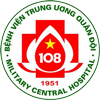Tên đề tài luận án: “Nghiên cứu hiệu quả giảm đau sau mổ mở ổ bụng của phương pháp truyền liên tục levobupivacain 0,2% vào vết mổ qua catheter nhiều lỗ bên”
Chuyên ngành: Gây mê hồi sức
Mã số: 62720122
Họ và tên nghiên cứu sinh: Lê Sáu Nguyên
Họ và tên người hướng dẫn: GS.TS. Nguyễn Quốc Kính
Cơ sở đào tạo: Viện NCKH Y Dược lâm sàng 108
Tóm tắt những đóng góp mới của luận án:
Đây là nghiên cứu đầu tiên vê giảm đau sau mổ ổ bụng bằng truyền liên tục thuốc tê qua catheter nhiều lỗ bên đặt tại vết mổ. Kết quả nghiên cứu cho thấy phương pháp có hiệu quả giảm đau tốt (VAS vận động và lúc nghỉ < 4). Phương pháp giúp giảm một nửa lượng morphin sử dụng theo phương pháp PCA (47,00 ± 10,95 mg so với 93,65 ± 16,60 mg với p < 0,05). Hồi phục sau mổ cải thiện và hạn chế được một số tác dụng không mong muốn so với giảm đau bằng PCA morphin hoặc bằng gây tê ngoài màng cứng.
Từ nghiên cứu này, phương pháp giảm đau bằng truyền liên tục thuốc tê vào vết mổ có thể là lựa chọn ở bệnh nhân có nguy cơ cao như rối loạn đông máu, có chống chỉ định với giảm đau ngoài màng cứng hoặc với morphin đường tĩnh mạch.
THE NEW MAIN SCIENTIFIC CONTRIBUTION OF THE THESIS
Name of thesis: "Research effectiveness of postoperative pain management of continouos wound infusion levobupivacain 0,2% via molti-hole catheter after abdominal surgery".
Speciality: Anesthesia and Critical Care
Code: 62.72.01.22
Name of graduate student: Le Sau Nguyen
Name of supervisor: Prof. PhD Nguyen Quoc Kinh
Educationnal foundation: 108 Institute of Clinical Medical and Pharmaceutical Sciences.
Summary of new main scinetific contribution of the thesis:
It is the first time the effect of postoperative pain management of continuos wound infusion via molti-hole catheter after abdominal surgery has researched. In conclusion, the analgesic effect of this method was good (the resting and activating VAS <4). The method reduced half of the amount of morphine used by PCA (47.00 ± 10.95 compared with 93.65 ± 16.60 mg, p < 0.05). The recovery after surgery was better. This method also minimized the number of side-effect compared with other pain management method such as morphine PCR or epidural anesthesia.
From this thesis, the continuos wound infusion via molti-hole catheter after abdominal surgery method could be chosen at high risks patients such as coagulation disorder, contraindication of morphine intravenous injection or epidural anesthesia.





